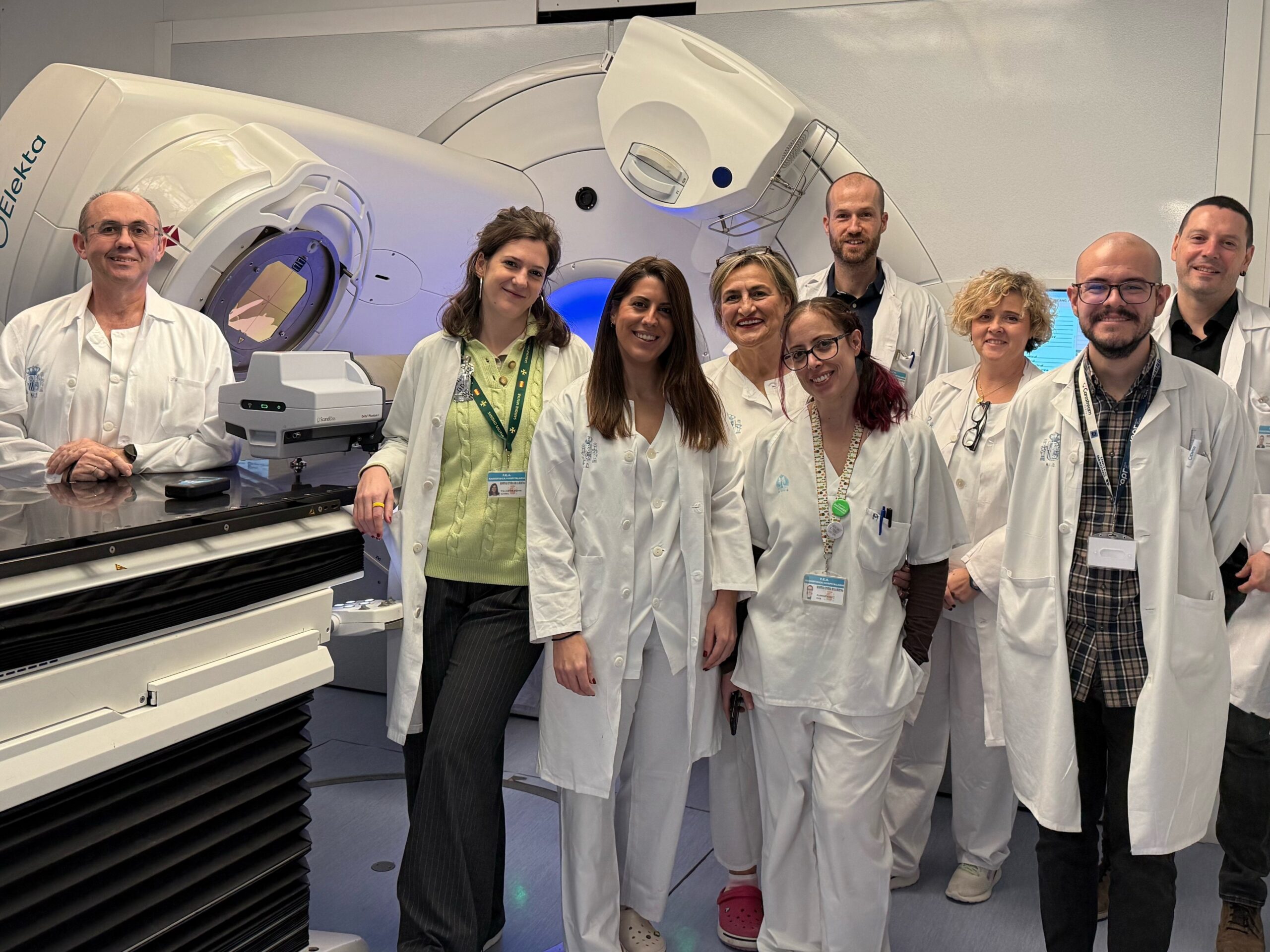
HOW YALE STREAMLINES DAILY CLINICAL WORKFLOW
SAVING TIME WHILE GETTING MORE ACCURATE RESULTS
An interview with Michael Butkus, Chief Resident of Medical Physics from Yale University School of Medicine & Yale New Haven Hospital.
COULD YOU GIVE A BRIEF DESCRIPTION OF THE PHANTOM AND DETECTORS?
The phantom is a PMMA or PlasticWater® cylinder with a 40cm length, 22cm diameter. Leveling legs and external markings aid in alignment. Within the phantom, there are two orthogonal 20x20cm2 detection planes. In total, the planes contain 1069 p-type diodes. In the central 6x6cm2 region of each detector plane, the resolution is 0.5cm. Outside of this region, the resolution is 1.0cm.
WHAT ARE THE MAJOR DIFFERENCES BETWEEN THE DELTA4 AND PHANTOM+ MODELS?
The most notable difference between the two phantoms is the lack of external wires in the Phantom+ model. The lack of external wires greatly decreases setup time and streamlines the measurement process. The older model required external connections to power the device, transfer data, and sync to the accelerator pulse. Power is now supplied by a rechargeable battery, with an approximant 4hr life. Data is transferred wirelessly. And the sync is now under automatic control. The orientation of the arrays has also changed. Previously they were offset from the cardinal angles by 40-50°, forming an X shape. Now they are aligned in the cardinal directions, forming a plus shape. Hence the name Phantom+. Additionally, the diodes are more stable and do not require relative recalibrations over their lifetime.
WHAT BENEFIT HAS THE PHANTOM+ BROUGHT TO YOUR INSTITUTION?
The Phantom+ has provided us with accurate 3D dose measurements in stable diodes for routine patient-specific QA. The temporal sampling of data allows for segment by segment dose reconstruction and the intuitive software allows for immediate analysis of results. The system has great utility for some of our less common techniques, such as FFF and extra-long fields, techniques that have proven burdensome to accurately measure with other devices. The new Phantom+ model is a much cleaner system that has helped streamline our QA process by eliminating external wires and reducing the need for recalibrations.
Presentation by Michael Butkus, Chief Resident of Medical Physics from Yale University School of Medicine & Yale New Haven Hospital
HOW LONG DOES IT TAKE TO RUN A STANDARD VMAT PLAN?
For a single 2 arc plan, about 10-15 minutes. Once the plan is approved, it takes 3-5 minutes to plan, export from your treatment planning software, and import into the Delta4 software. Full setup of the phantom also takes between 3-5 minutes. Delivery of the plan takes between 2 and 3 minutes. Results are then provided available immediately. A few minutes will be added if you choose to do a daily output correction, or if the superior/inferior field size is larger than 20cm.
HOW MUCH TIME HAS TO BE DEVOTED TO CALIBRATING THE UNIT?
It’s pretty minimal. The initial installation and calibration are done with a Scandidos representative. The first two steps of the calibration are done in Sweden (pre-calibrated), the relative and directional calibrations. They are done with the phantom disassembled so that the arrays can have a flat profile, with the stability of the new generation of diodes, it only has to be done once. The relative calibration characterizes the response of each diode. The directional calibration is not to correct for the directional dependence of the diodes; that is already accounted for in the software. It is for differences in dose caused by the actual detector board and electronics. The calibrations done at the time of the installation at the clinic are the reference and absolute calibration and they take place in the phantom itself. The Phantom+ has an ion chamber cavity within itself which has fits for several common ion chambers. These steps really just boil down to irradiating at different field sizes for all energies with the ion chamber inserted and then repeating without the ion chamber at different gantry angles.
WHAT ARE THE SHORTCOMINGS OF THE SYSTEM, AND HOW ARE THEY ACCOUNTED FOR?
Being a solid-state array, the measured planer resolution is lower than that of film or EPID. Delta4 makes up for this in two ways. First, ray-scaling is used to calculate dose in 3D space at the same resolution as your calculated plan. Secondly, consecutive measurements with small shifts can be acquired and merged together to gain a measured resolution of 0.25cm. This same merging method allows for fields with lengths up to 38cm (superior/inferior dimension) to be measured on the 20×20 arrays.
IS IT FFF COMPATIBLE?
We have run our Phantom+ unit with a maximum dose rate of 2400MU/min and have not experienced any errors or malfunctions.
IS THE SOFTWARE BETWEEN THE OLDER MODEL AND THE PHANTOM+ DIFFERENT?
Not at all. There is zero learning curve when switching between models. The software works with both phantom models.
WANT TO LEARN MORE ABOUT FAST AND INDEPENDENT QA?
Contact us!
Book a demo
Get the answers you need, connect with a Delta4 expert!






